Can decorative plaster be used in the bathroom?
How to update the interior and finish the walls in the bathroom? Everyone decides this question in their own way. Some opt for proven traditional solutions such as ceramic tiling or waterproof paint. Others prefer more original, but no less practical ways of finishing. This option can be decorative plaster in the bathroom.
Finishing the bathroom with decorative plaster is not common, as it is a relatively new finishing material. At first, this finishing option was used to decorate the "ceremonial" premises - living rooms, halls, dining rooms.
Then it began to be used for finishing rooms that can be classified as "service" - corridors, kitchens, bathrooms. So if the owners have a desire to design a unique interior, you should pay attention to the textured plaster for the bathroom.
The properties of the coating allow the use of decorative plaster even in rooms with such specific conditions as in the bathroom. The coating is not afraid of moisture and does not lose its qualities with constant temperature changes.
Advantages of decorative plaster
If the owners decide to update the interior by applying decorative plaster for the bathroom with their own hands, then you should familiarize yourself with the properties of the coating and the technology of its application. If you are familiar with the technique of conducting plastering work, then you can do this work yourself without much difficulty. Decorative plaster for the bathroom is different:
- Gorgeous look and originality.
- Brightness, elegance and the possibility of applying images to the plaster. Waterproof decorative plaster is presented in a wide color palette, you can choose a coating option suitable for any interior.
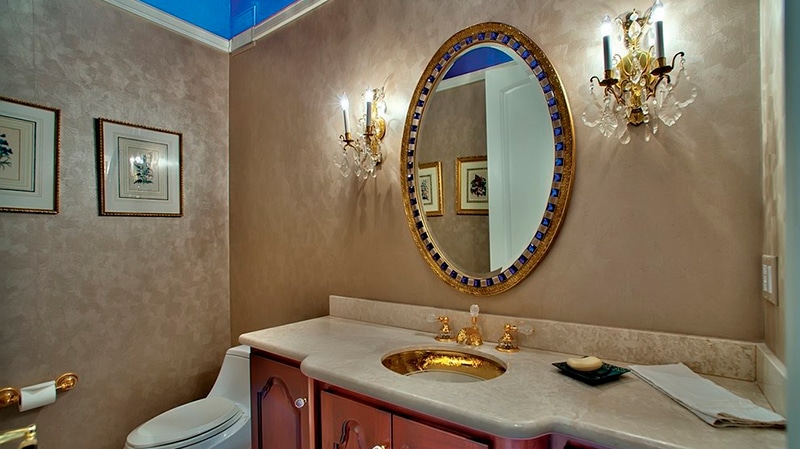
- Easy care.
- A high degree of vapor permeability, due to which the vapor does not "hang" in the air, but is absorbed by the coating. If the walls of the bathroom are finished in this way, then the mirrors in the room will never fog up.
Advice! Despite the property of plaster to maintain an optimal level of humidity in the room, well-functioning ventilation must be established in the bathroom, since excess moisture must be constantly removed from the room.
Conditions for using decorative plaster in the bathroom
In order for decorative plaster for bathroom walls to last for a long time, it is necessary to properly prepare the surfaces before applying it. It is recommended to apply a decorative coating on the plaster layer made with sanitizing plaster. This type of mortar differs from ordinary plaster in that:
- Creates a waterproofing layer on the wall.
- It is resistant to salt precipitation, in particular sulfides, which prevents the appearance of efflorescence.
- It is able to absorb excess moisture from the walls and regulate the microclimate in the room.
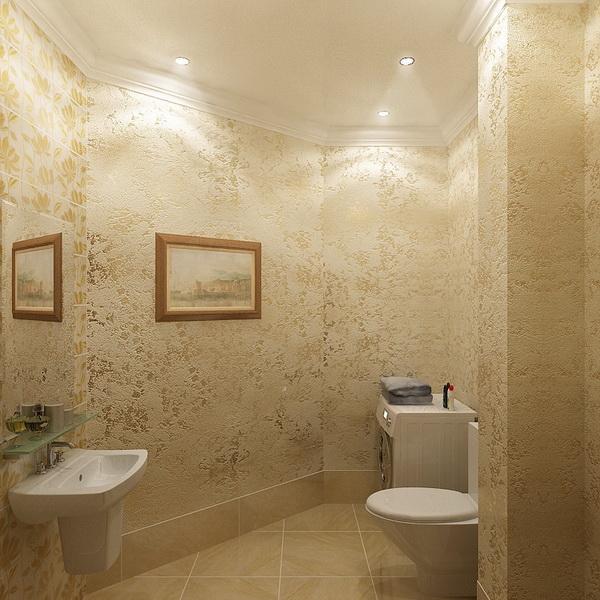
With all this, the sanitizing plaster is easy to apply, does not form cracks when dried, and does not contain toxic substances.
Advice! Sanitizing plaster is a material that is ideal for leveling walls and for creating a waterproofing layer, but this composition cannot be used as a top coat. Other materials are used to create decorative coatings.
Varieties of decorative plasters
As a finishing material, you can use various decorative mixtures, you can see the results of the work in the photo, which is easy to find on sites whose main theme is the interior and construction and repair work.
What kind of decorative plaster in the bathroom will serve for a long time, while maintaining an attractive appearance?
The most common option is Venetian plaster. This coating imitates the surface of natural marble and looks very stylish. The coating is smooth and shiny, as a special wax composition is applied over the plaster, which needs to be updated periodically (every few years).
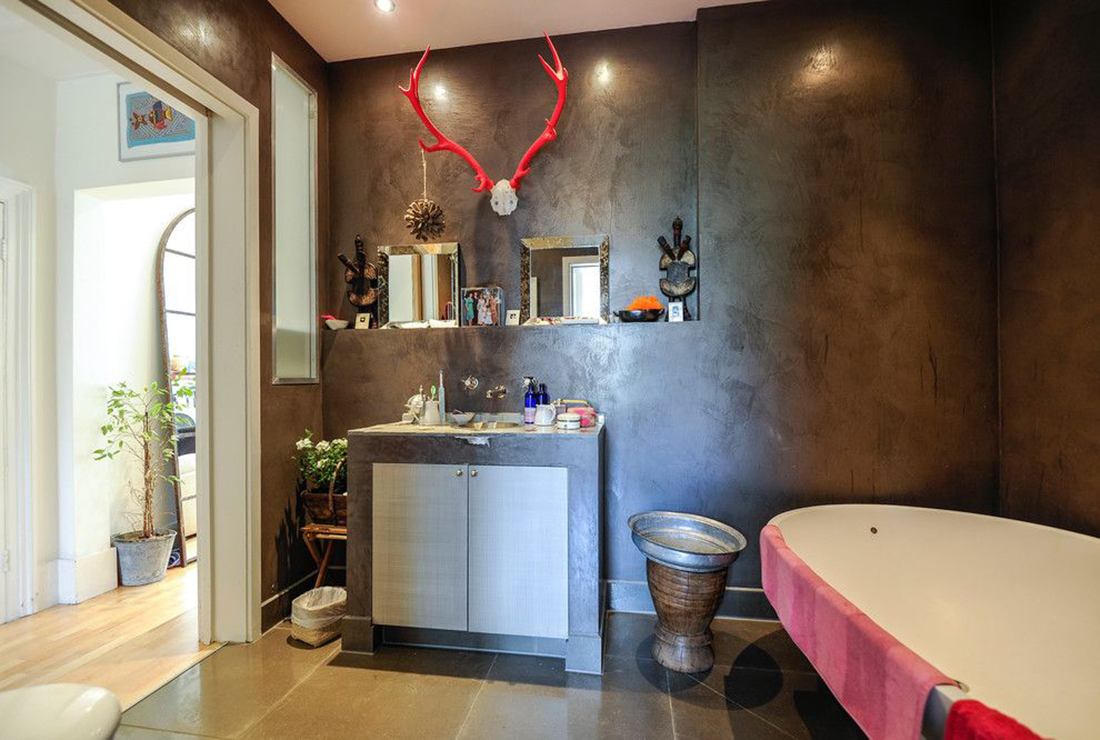
Often used textured plaster in the bathroom. Such mixtures create a relief surface on the finished surface. That is, the walls will not be smooth; in the process of applying mixtures, a certain type of relief is created on them. With the help of textured plasters, you can create various types of surfaces:
- Rough-furrowed.
- Rough uniform.
- Modeling, allowing you to create various types of drawings.
Advice! To create an original design of the walls in the bathrooms, you can use special stencils for working with decorative plaster. With the help of such stencils, various patterns and ornaments can be applied to the walls.
Applying plaster to bathroom walls
So, decorative plaster in the bathroom is one of the original and quite practical types of finishes. Consider how to work with this material.
Nuances when choosing materials
When choosing materials, it is necessary to pay attention to the following details:
- It is not very convenient to work with liquid formulations, since they can no longer be diluted with water.
- If the type of material with coarse filler is selected, then it can only be applied manually.
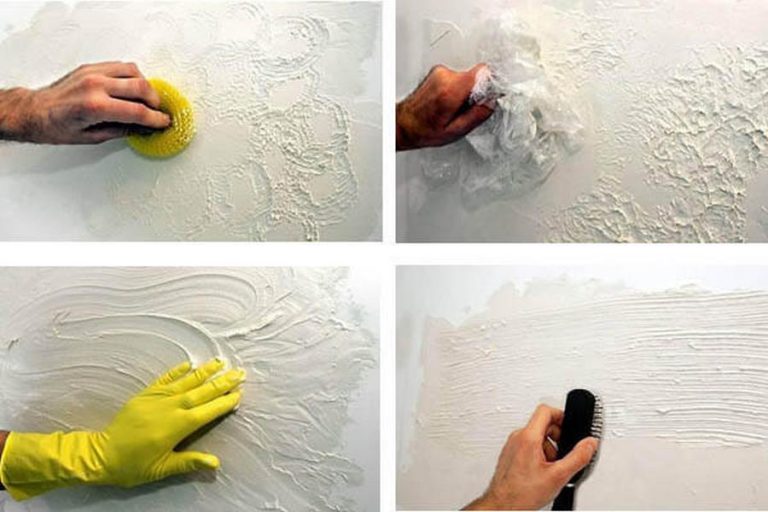
- The most difficult thing is to work with material containing crumbs that differ in size.
- Water-based plasters are the safest, so they are recommended for indoor use. However, when it comes to finishing the walls in the bathroom, a wax-based protective coating should be applied over the plaster.
Features of working with different surfaces
Plaster can be applied to a variety of surfaces, but some nuances must be taken into account:
- When applying moisture-resistant compounds to dense surfaces (plastic, polyurethane foam, walls painted with oil paint), the plaster will dry much longer than when working with porous surfaces (concrete, plastered walls).
- When applying a water-based compound to surfaces such as wood, fiberboard or chipboard, there is a risk of deformation of the base.
- If defects (dents, cracks, etc.) are noticeable on the surface on which it is planned to apply a decorative coating, then the consumption of materials will increase.
- When applying aqueous plaster solutions on ferrous metal surfaces, rusty spots may appear on the decorative coating over time.
Advice! Almost all decorative plasters have the same drying time. Primary drying occurs 3-5 hours after application, for complete drying it takes from one to three days, but complete polymerization of the composition will occur only after a week. During the first two days, the freshly applied coating will need to be protected from mechanical influences, drafts and temperature fluctuations.
Surface preparation
Preparing walls before applying decorative plaster differs little from preparatory work before applying conventional plasters:
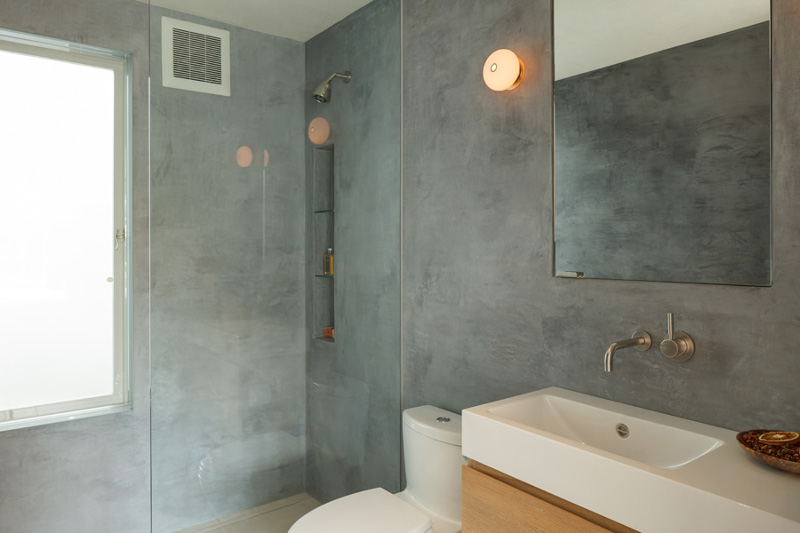
- Surfaces must be dry and clean.
- If there are stains of oil, rust or silicone, they will need to be removed first.
- On dry walls, it is imperative to apply a primer, this will strengthen the bearing layer of the plaster and ensure a long service life of the coating. The soil layer must be at least 20 mm thick. After application, the primer layer is strongly compacted by grouting. Then the surface is lined with cells.
Applying plaster
Decorative plaster compositions can be applied to prepared surfaces. If fine-dispersed plaster is chosen, then it is more convenient to apply it with a sprayer; when working with coarse-dispersed solutions, you will have to use hand tools.
To create a textured surface, various tools are used - brushes, embossed rollers, sponges, etc. So, decorative plaster is a material that is quite acceptable to use in bathrooms. This type of finish goes well with other materials, for example, walls can be covered with plaster, and a tile screen can be laid out for a bath.






